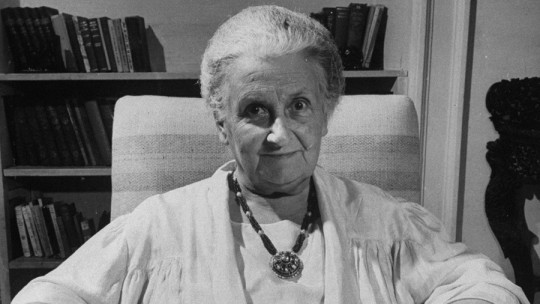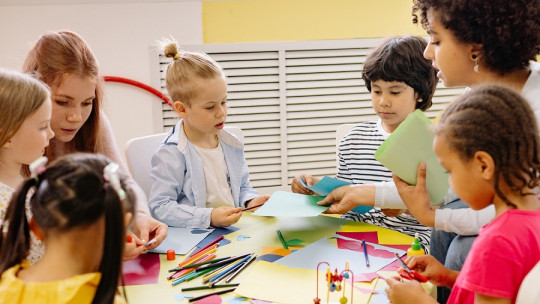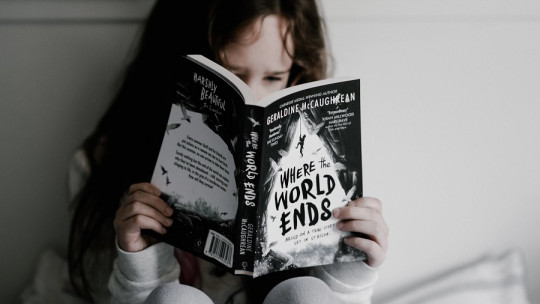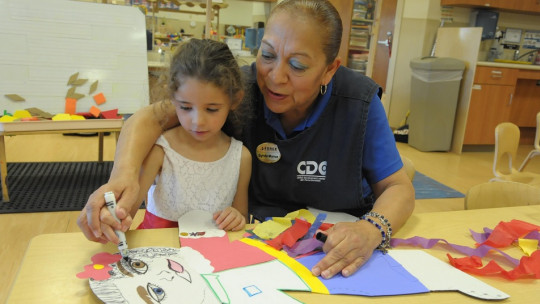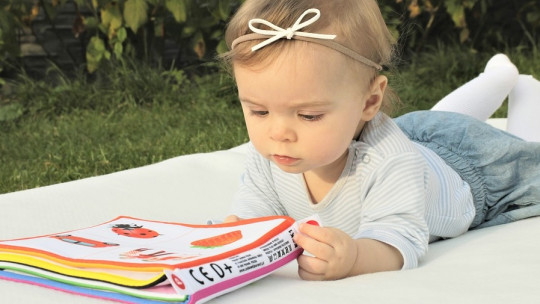
Education is and always has been a fundamental issue for the human being. There have been multiple theories and methods developed with the purpose of promoting learning and improving the educational system and the acquisition of knowledge and skills and the enhancement of exploration, interests and abilities of each individual.
In addition to the most classic and used ones, there are a large number of alternative methods to educate. One of the best known is the Montessori method, but there are also other methodologies that are equally valued and used today, such as The Glenn Doman method for teaching very young boys and girls to read In this article we briefly explain what this method is, specifically in its program for learning to read.
The Glenn Doman method for reading: definition and objectives
The Glenn Doman Method proposes that human beings are capable, are curious and even want to read at an early age, having the potential for this capacity from the first years of life. From its starting point, it is considered that in the first six years of life the capacity to learn is much greater than that which will be had during the rest of one’s existence.
Initially It was designed to help promote the learning and development of subjects with disabilities and brain injuries, but over time it has expanded to childhood on a general level. Although in this article we focus on learning to read, the author also generated programs to stimulate other skills and abilities early on, such as learning mathematics, music or physical activity.
Some theoretical foundations of the method
The author proposes that the most appropriate and most useful time to learn to read begins at the age of two, because it is about a moment in the subject’s life when there is a high level of curiosity and there is a plasticity that allows one to acquire small pieces of information with great ease and in an enthusiastic manner. It is suggested that from then on it will be a little more complicated to learn to read. It is considered that a child can learn to read words as early as one year of age, being able to read phrases from the age of two and simple books from the age of three.
The original idea is for parents to apply it at home in a flexible way and trying to make it fun, like a game. The methodology involves the use of cards that will be shown to the child several times a day, in short periods of time and in series of 10 stimuli. The aim is to enhance learning by stimulating and optimizing babies’ curiosity and desire to learn. This facilitates teaching and learning, enhancing capabilities and hindering or preventing possible difficulties.
It starts from the idea of bits of intelligence, basic units of information that the child can understand or understand. It is necessary that said element be representative of a single idea and that this idea is new for the subject. Based on this idea, the baby can learn to relate letters without needing to know the alphabet: it is about understanding the concept itself and associating it with the word.
The bits must be chosen carefully, creating five series that each have 5 of these elements. They will be presented briefly, with the adult reading each one aloud and allowing a few seconds to pass between one series and another. After finishing it is essential to reinforce the minor’s behavior learning should be celebrated and lived as a fun and communicative game.
To keep in mind before teaching…
There are two elements of great importance when using the Glenn Doman method and generate real learning of the skill of reading: the attitude of the parents/educators and the use of material appropriate to the child’s abilities.
The attitude of parents
One of the most important aspects and that in fact is to a large extent what can allow the acquisition of skills as complex as this is the approach or approach taken in this regard by those who teach it.
It is essential to consider reading as a game, as a rewarding activity that is carried out for pleasure and that is appealing in itself. Reading should be a reward, not a punishment The child is fundamentally interested in learning and exploring, but he won’t do it if she ends up associating it with something aversive.
Another aspect on which the author places special emphasis is the duration of the learning sessions: they must be short and end before the minor wants and expresses that he wants them to end. It is about not only that the little one does not get tired, but that he wants and feels called to read, even requesting it.
Material
We are teaching a child under three years old to read: We are not going to start with Don Quixote or a work by Shakespeare. The material we use must always be appropriate and take into account the abilities of the minor.
It is necessary that we use simple materials: It is recommended to use white cardboard with a certain level of rigidity In it, a single word or phrase (in more advanced phases) will be written with clear strokes and always in the same font (which must be easily visible) per piece of cardboard, in lowercase letters. The size of each letter must be very large, and maintain a certain separation between letters and with respect to the margins.
The author proposes that among these materials we include words like dad and mom, parts of the human body, words about the world or nearby environment, vocabulary to build sentences and paragraphs, a book with simple vocabulary and a series of cards with the alphabet. The size of the first words is initially recommended to be 12.5 by 10cm, and each cardboard be 15 by 60cm, in red. The size of the letters and cardboard will reduce as we progress in learning, changing the color to black from the words that would correspond to the nearby environment
Consider it as a game for children
It is likely that many people will be interested in this method in order to help their baby learn the skill of reading early. However, it must be taken into account that no matter how much the baby may have the capacity to acquire this skill, it must be highly assessed whether or not it is appropriate and how this method is put into practice.
And it is that It is essential to make learning fun and enjoyable for the baby and not an imposed and repetitive obligation. It’s about presenting it as a game, which allows them to experiment, communicate, socialize and have fun. In this way, the baby associates the fact of learning with something that brings him joy and stimulates him. In fact, if it is proposed as a simple imposition, the baby ends up hating such learning and may have greater problems in acquiring it.
Proposed phases for learning to read
The Glenn Doman method, in his program for learning to read, proposes carrying out a series of phases to be applied in short batches expressing joy and making the process an element of leisure and union between parent and child.
Visual differentiation
Initially, it is essential to teach the child to read with few words, proposing the use of two. Later they will increase. The location is also important, and it is necessary to look for a point where there are no major distractions.
The procedure is simple: put the word before the child, and tell him what it says without further explanation. The word is visible for around ten seconds, and then remove her from your sight and proceed to show her affection for a minute or two, after which the process will be repeated. And so a third time. The previous batch would form a session, which would be repeated five times on the same day, separated by at least half an hour.
This process is done on the first day. During the second, it begins to be carried out by carrying out two sessions. In the third session of the second day, a small modification would occur: The word is presented and the person is asked “What is this?” Wait about ten seconds. If the child responds with words, a great level of joy will be shown, they will be congratulated and pride and affection will be expressed, even physically through hugs. This reinforcement is solely affective, not accompanied by anything material.
If the minor does not say the word or makes a mistake, there is no need to reprimand him nor show any type of disappointment. You proceed by joyfully indicating “this is X, right?” As a general rule, learning is fast. Another word is not taught until the first has been learned.
For this the same method would be used. It is important not to overlap words until the child has learned them separately.
After knowing them, we proceed to show the child the first one and ask him to identify it. After that, he continues to show himself the first word and shows himself with the other hand the second word, which he is also asked to identify. Once this is done, the two pieces of cardboard are placed in front of it and the child is asked to point first to one and then to the other It is about teaching you to visually differentiate stimuli. Generally in this step simple and basic words like mom and dad are used.
The vocabulary of the body
In this second stage it is based on the same principle as the previous one, but adding the sense of touch to sight and hearing. First of all, take the part of the child’s body that we are talking about and tell him what it is. After that, you hold the cardboard with the corresponding name and you are told that this is also the name.
An example: The word hand is first taught by holding the child’s hand and saying that this is a hand and then showing him the cardboard and telling him the same thing.
The rest of the procedure is the same as the previous phase. You have to be careful do not present several words at the same time until the child knows them separately do not consecutively show words that begin with the same letter and try to increase the number of letters in each word progressively, starting with short words.
Domestic vocabulary
A third stage, in which words related to elements present in the subject’s daily life will be shown, generally familiar objects, family and even actions. The font size has been reduced It is proposed that the child could be learning approximately one word per day in this phase, although this will depend on the child’s pace. It is important to remember that it should continue to be presented as a game and that it be carried out briefly and without the child getting bored.
Read words within sentences
In this phase a slightly more complex learning is carried out. You will go from recognizing single words to trying to compose a sentence. The parent must generate a card with each word of the phrase to be learned. Each word is learned separately. Then they are put together and ordered, and the child is asked to indicate which word each of them is It’s about learning to read words related to each other.
Reading sentences
After choosing a simple and appropriate book, with few words and large print, phrases are extracted that can be worked on little by little. It starts with short sentences, which are read slowly and clearly while we point out each word separately. Then we ask him what the cardboard says, pointing to each word separately. Once read, their activity is celebrated and reinforced. As you learn to read a page, you move on to the next but rereading the previous ones.
reading a book
It is about making the child read the book from which we have extracted the phrases. It must be taken into account that the size is increasingly smaller in each phase (in this specific phase it is proposed that the letter be about six millimeters), which represents greater difficulty for the little one. If there are difficulties we can search and prepare larger letters.
learning the alphabet
Although it may seem strange and contrary to what happens in formal education, It is possible after learning to read to learn the alphabet The reason for this is that letters are abstract elements, which can be more complex to interpret than bits of information referring to known elements. In short, this method considers that it is much easier to read a word than the elements that make it up.
Is it appropriate to use this method? Criticisms of this methodology
The Glenn Doman method is controversial, due to the age at which it is aimed It is suggested that overstimulating children at an early age can cause difficulties for them and that it makes it easy for many parents to overwhelm the child in order for them to learn to read as early as possible, making it difficult for them to experiment and play. And we must not forget that at those ages everything is new and to be explored.
Nor should we forget that At that age our nervous system is still immature and that although we can learn to read early, understanding what is read will be complex and difficult to carry out, as the language has not yet been completely automated.
Likewise, the fact is also raised that when the time comes for them to attend school, these children would be ahead of their peers and could become bored, making their own later learning difficult.
However, many of these criticisms were foreseen by the author himself, who stated that part of the problem is an overprotective attitude and anticipating that the child will not understand the process or content of reading due to his age. In this way, we would be limiting his potential.
Although There are no tests or studies that show the effectiveness of the method the idea of reinforcing behavior and considering learning as an element of leisure in which the minor also has the opportunity to bond emotionally with his parent makes this method something that can be positive for him.

